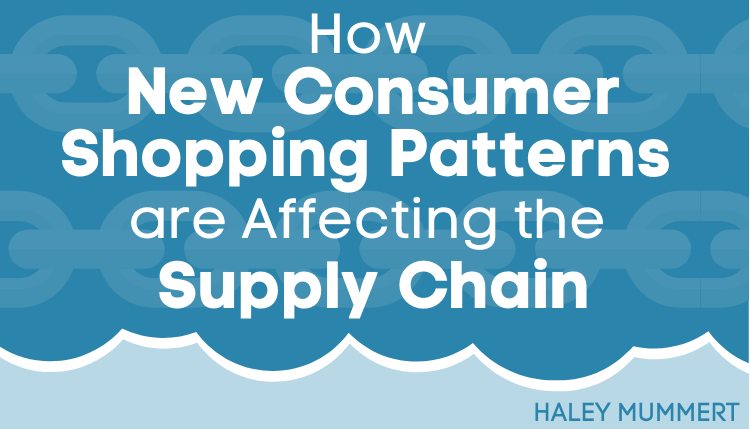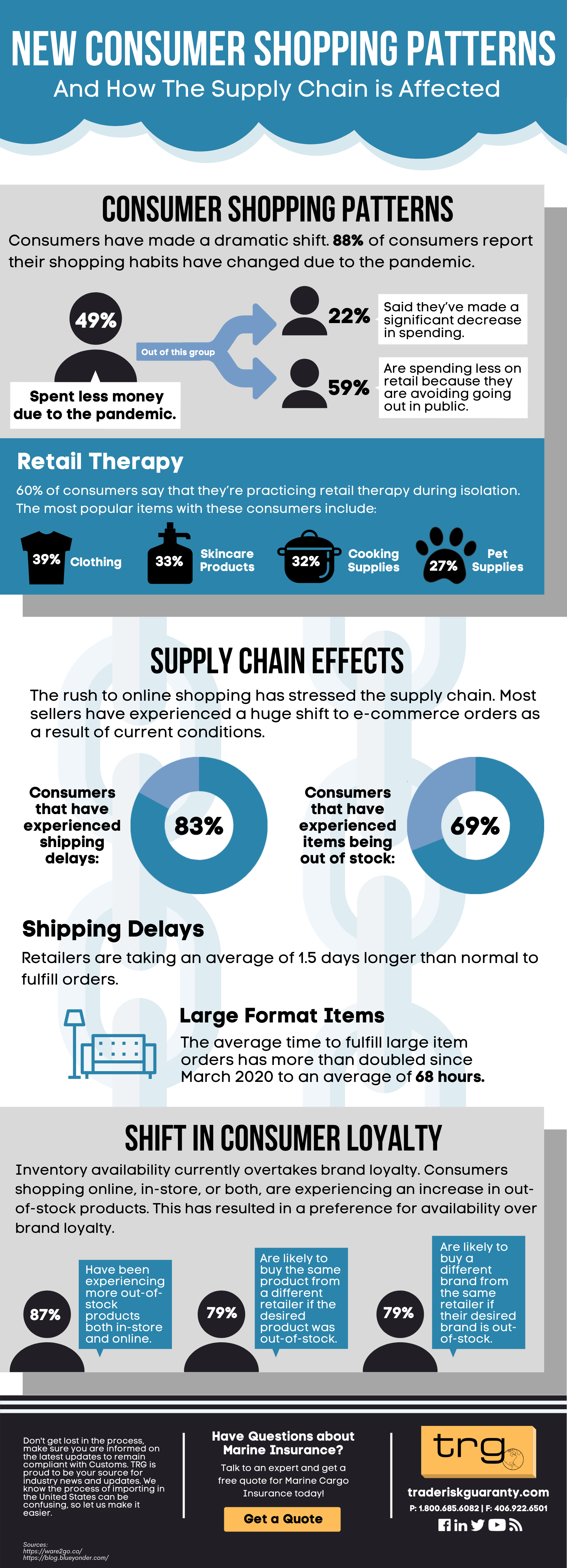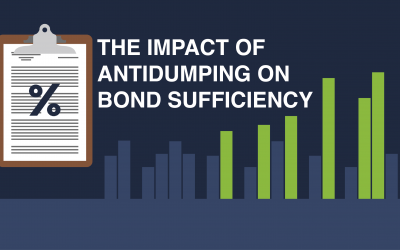Consumer trends and preferences evolve based on the environments they exist in. COVID-19’s impact on everyday routines has created a cause for examination across all aspects of the supply chain.
As the world adjusts to a new set of norms in response to the COVID-19 crisis, the phrase “business as usual” has a new meaning for suppliers, retailers, consumers, and the supply chain.
New Consumer Shopping Patterns
According to a Ware2Go study, Consumers have made a dramatic shift. 88% of consumers report their shopping habits have changed due to the pandemic.
- 87% of respondents are shopping online.
- 64% state they have replaced traditional weekly shopping trips with online ordering.
- 58% of Americans browse online retailers daily.
- 39% plan to continue online shopping to avoid visiting stores.
- 55% are purchasing from online retailers they’ve never shopped with before.
- 45% are purchasing clothing.
- 34% are buying vitamins and supplements online.
- 28% are buying pet supplies.
A significant barrier to faster adoption of online shopping was the need to change existing consumer habits. This current shift will permanently modify consumer behavior, putting direct-to-consumer brands in a position to increase market share in the long run.
According to a survey conducted by Blueyonder, Consumers are spending more online, but less in general. 49% of Americans have spent less money because of the pandemic.
- 22% of this group said they have made a significant decrease in spending.
- 59% of this group are spending less on retail specifically because they are avoiding going out in public and cannot purchase things in-person.
Grocery delivery services and subscription meal companies have increasingly gained traction. Grocery stores are open as essential businesses, and increased adoption of grocery delivery is being seen, particularly those most at risk.
- 68% of consumers continue to shop in-store.
- 29% of consumers said they preferred using online grocery delivery services during the COVID-19 pandemic.
While stores are closed, consumers are embracing online shopping as retail therapy. 60% say that they’re practicing retail therapy during isolation. The most popular items with shoppers include:
- Clothing – 39%
- Skincare products – 33%
- Cooking supplies – 32%
- Pet supplies – 27%
Click the Image for a Full PDF
Supply Chain Effects from Consumer Shopping Patterns
The rush to online shopping has stressed the supply chain. Most sellers have experienced an enormous shift to e-commerce orders as a result of current conditions.
- 69% of consumers have experienced shipping delays.
- 83% say they’ve experienced items being out of stock.
Peaks and valleys in demand experienced by online and in-store retailers are creating unnatural volumes and patterns. Demand, price, and inventory planning tools equipped with AI and machine learning technologies are helping normalize future supply chain functions.
Retailers are taking an average of 1.5 days longer to fulfill orders. Delays are significant for large-format products such as furniture. The average time a retailer takes to fulfill large format orders has doubled in the past six weeks, to an average of 68 hours.
Inventory availability currently overtakes brand loyalty. Consumers are shopping online, in-store, or both, are experiencing an increase in out-of-stock products. This has resulted in a preference for availability over brand loyalty. Consumers are disregarding their brand loyalties for the retailers they shop with and the products they carry.
- 87% have been experiencing more out-of-stock products, both in-store and online, recently due to COVID-19.
- 79% said they were likely to buy the same product from a different retailer if the desired product was out of stock.
- 79% are likely to buy a different brand of a product from the same retailer if their desired brand of that product is out of stock.
Manufacturers and retailers are pivoting from the business-to-business paradigm to the business-to-everyone model, along with unique shipping, logistics, and fulfillment requirements. Purchasing patterns across new online sellers and categories take the form of direct-to-consumer sales. Essentially, If you are selling now, your business is direct-to-everyone.







![[Webinar] 2023 Q2 International Trade Update](https://traderiskguaranty.com/trgpeak/wp-content/uploads/2023/08/2023.07_Q2-International-Trade-Update_Page_01-400x250.png)
